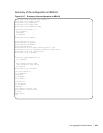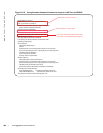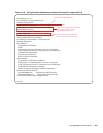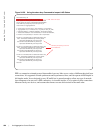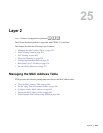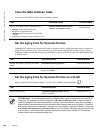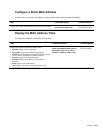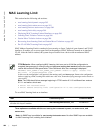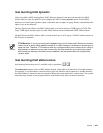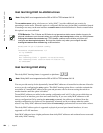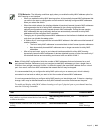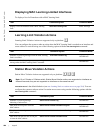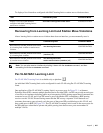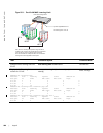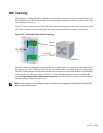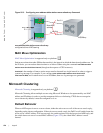
Layer 2 | 563
mac learning-limit dynamic
After you enable a MAC learning limit, MAC addresses learned on the port and entered in the MAC
address table are static by default. If you configure the MAC learning
dynamic option, learned MAC
addresses are stored in the dynamic region of the table and are subject to aging. Entries created before this
option is set are not affected.
On the C-Series and S-Series, the MAC address table is stored in the Layer 2 FIB region of CAM. The
Layer 2 FIB region allocates space for static MAC address entries and dynamic MAC address entries.
On the E-Series, the MAC address table is stored in the Layer 2 ACL region. All MAC address entries on
the E-Series are dynamic.
mac learning-limit station-move
mac learning-limit station-move is available only on platforms: c s
The station-move option, allows a MAC address already in the table to be learned off of another interface.
For example, if you disconnect a network device from one interface and reconnect it to another interface,
the MAC address is learned on the new interface. When the system detects this “station move,” the system
clears the entry learned on the original interface, and installs a new entry on the new interface.
FTOS Behavior: If you do not configure the dynamic option, the C-Series and S-Series do not detect
station moves in which a MAC address learned off of a MAC-limited port is learned on another port on
same line card. Therefore, FTOS does not take any configured station-move violation action. When a
MAC address is relearned on any other linecard (any line card except the one to which the original
MAC-limited port belongs), the station-move is detected, and the system takes the configured the
violation action.



